Hot Extrusion Enhanced Homogenization of Microstructure in a Spray Deposition Aluminum Alloy
Abstract
:1. Introduction
2. Materials and Methods
2.1. Material
2.2. Thermal Simulation and Hot Extrusion
2.3. Heat Treatment Study
2.4. Microstructure and Phase Characterization
3. Results
3.1. Microstructure Characterization of Spray Deposited 7055 Ingot
3.2. Microstructure Characterization of Spray-Deposition 7055 after Hot Compression and Extrusion
3.3. Microstructure Responses of Heat Treated Specimen
4. Discussion
4.1. Mechanism of Microstructure Evolution during Spray Deposition and Hot Extrusion
4.2. Mechanism of Hot Extrusion Enhanced Homogenization of Microstructure
5. Conclusions
Author Contributions
Funding
Conflicts of Interest
References
- Liao, B.; Wu, X.; Cao, L.; Huang, G.; Wang, Z.; Liu, Q. The microstructural evolution of aluminum alloy 7055 manufactured by hot thermo-mechanical process. J. Alloys Compd. 2019, 796, 103–110. [Google Scholar] [CrossRef]
- Chen, S.; Chen, K.; Peng, G.; Jia, L.; Dong, P. Effect of heat treatment on strength, exfoliation corrosion and electrochemical behavior of 7085 aluminum alloy. Mater. Des. 2012, 35, 93–98. [Google Scholar] [CrossRef]
- Liu, L.L.; Pan, Q.L.; Wang, X.D.; Xiong, S.W. The effects of aging treatments on mechanical property and corrosion behavior of spray formed 7055 aluminium alloy. J. Alloys Compd. 2018, 735, 261–276. [Google Scholar] [CrossRef]
- Yu, H.; Wang, M.; Jia, Y.; Xiao, Z.; Chen, C.; Lei, Q.; Li, Z.; Chen, W.; Zhang, H.; Wang, Y.; et al. High strength and large ductility in spray-deposited Al–Zn–Mg–Cu alloys. J. Alloys Compd. 2014, 601, 120–125. [Google Scholar] [CrossRef]
- Yang, Y.; Zhao, Y.; Kai, X.; Zhang, Z.; Zhang, H.; Tao, R.; Chen, G.; Yin, H.; Wang, M. Effects of hot extrusion and heat treatment on microstructure and properties of industrial large-scale spray-deposited 7055 aluminum alloy. Mater. Res. Express 2018, 5, 016519. [Google Scholar] [CrossRef]
- Fan, X.; Jiang, D.; Meng, Q.; Zhong, L. The microstructural evolution of an Al–Zn–Mg–Cu alloy during homogenization. Mater. Lett. 2006, 60, 1475–1479. [Google Scholar] [CrossRef]
- JenabaliJahromi, S.A. Creep behavior of spray-cast 7XXX aluminum alloy. Mater. Des. 2002, 23, 169–172. [Google Scholar]
- Lavernia, E.J.; Grant, N.J. Spray deposition of metals: A review. Mater. Sci. Eng. 1988, 98, 381–394. [Google Scholar] [CrossRef]
- Sheng, X.; Lei, Q.; Xiao, Z.; Wang, M. Hot Deformation Behavior of a Spray-Deposited Al-8.31Zn-2.07Mg-2.46Cu-0.12Zr Alloy. Metals 2017, 7, 299. [Google Scholar] [CrossRef] [Green Version]
- Zhou, L.; Chen, K.; Chen, S.; Zhang, X.; Fan, S.; Huang, L. Comparison of hardenability and over-aging precipitation behaviour of three 7xxx aluminium alloys. Mater. Sci. Technol. 2019, 35, 637–644. [Google Scholar] [CrossRef]
- Zhao, X.; Fan, C.; Yu, R.; Yuan, P. Effect of heat treatment on the microstructure and mechanical properties of spray-formed 7055 aluminium alloy. Philos. Mag. Lett. 2019, 99, 102–109. [Google Scholar] [CrossRef]
- Ren, J.; Wang, R.; Feng, Y.; Peng, C.; Cai, Z. Microstructure evolution and mechanical properties of an ultrahigh strength Al-Zn-Mg-Cu-Zr-Sc (7055) alloy processed by modified powder hot extrusion with post aging. Vacuum 2019, 161, 434–442. [Google Scholar] [CrossRef]
- Liu, C.Y.; Zhang, B.; Ma, Z.Y.; Jiang, H.J.; Zhou, W.B. Effect of Sc addition, friction stir processing, and T6 treatment on the damping and mechanical properties of 7055 Al alloy. J. Alloys Compd. 2019, 772, 775–781. [Google Scholar] [CrossRef]
- Liao, B.; Cao, L.; Wu, X.; Zou, Y.; Huang, G.; Rometsch, P.A.; Couper, M.J.; Liu, Q. Effect of Heat Treatment Condition on the Flow Behavior and Recrystallization Mechanisms of Aluminum Alloy 7055. Materials 2019, 12, 311. [Google Scholar] [CrossRef] [Green Version]
- Liu, Q.; Chen, S.; Gu, R.; Wang, W.; Wei, X. Effect of Heat Treatment Conditions on Mechanical Properties and Precipitates in Sheet Metal Hot Stamping of 7075 Aluminum Alloy. J. Mater. Eng. Perform. 2018, 27, 4423–4436. [Google Scholar] [CrossRef]
- Sheng, X.; Lei, Q.; Xiao, Z.; Wang, M. Precipitation Behavior and Quenching Sensitivity of a Spray Deposited Al-Zn-Mg-Cu-Zr Alloy. Materials 2017, 10, 1100. [Google Scholar] [CrossRef] [Green Version]
- Li, C.; Zhang, X.; Wang, S. Quench Sensitivity of Four Al-Zn-Mg-Cu Aluminum Alloys. Rare Met. Mater. Eng. 2017, 46, 3374–3381. [Google Scholar]
- Lin, L.; Liu, Z.; Bai, S.; Ying, P.; Wang, X. Effects of germanium on quench sensitivity in Al-Zn-Mg-Zr alloy. Mater. Des. 2015, 86, 679–685. [Google Scholar] [CrossRef]
- Liu, S.; Li, C.; Han, S.; Deng, Y.; Zhang, X. Effect of natural aging on quench-induced inhomogeneity of microstructure and hardness in high strength 7055 aluminum alloy. J. Alloys Compd. 2015, 625, 34–43. [Google Scholar] [CrossRef]
- Zhang, G.; Yang, X.; Huang, L. Intergranular Corrosion Morphologies in Relation with Their Microscopic Mechanisms in the Artificially-aged 7055 Aluminum Alloy. Rare Met. Mater. Eng. 2018, 47, 3393–3399. [Google Scholar]
- Mehdi, S.; Mohammad, E.; Saeed, S. Effect of Silver Addition on Mechanical Properties and Stress Corrosion Cracking in a Predeformed and Overaged 7055 Aluminum Alloy. J. Test. Eval. 2018, 46, 1891–1900. [Google Scholar]
- Zhang, P.; Wang, Y.; Li, W.; Wang, Q.; Li, Y. A study on microstructure evolution and corrosion resistance of cutting layer metal of 7055 aluminum alloy based on extreme environment. Mater. Corros.-Werkst. Und Korros. 2018, 69, 1389–1397. [Google Scholar] [CrossRef]
- Zuo, J.; Hou, L.; Shi, J.; Cui, H.; Zhuang, L.; Zhang, J. Effect of deformation induced precipitation on dynamic aging process and improvement of mechanical/corrosion properties AA7055 aluminum alloy. J. Alloys Compd. 2017, 708, 1131–1140. [Google Scholar] [CrossRef]
- Zuo, D.Q.; Cao, Z.Q.; Cao, Y.J.; Huo, L.B.; Li, W.Y. Thermal fields in dissimilar 7055 Al and 2197 Al-Li alloy FSW T-joints: Numerical simulation and experimental verification. Int. J. Adv. Manuf. Technol. 2019, 103, 3495–3512. [Google Scholar] [CrossRef]
- Lin, H.; Wu, Y.; Liu, S. Impact of initial temper of base metal on microstructure and mechanical properties of friction stir welded AA 7055 alloy. Mater. Charact. 2018, 146, 159–168. [Google Scholar] [CrossRef]
- Lin, H.; Wu, Y.; Liu, S.; Zhou, X. Effect of cooling conditions on microstructure and mechanical properties of friction stir welded 7055 aluminium alloy joints. Mater. Charact. 2018, 141, 74–85. [Google Scholar] [CrossRef]
- Liang, H.; Yan, K.; Wang, Q.; Zhao, Y.; Liu, C.; Zhang, H. Improvement in Joint Strength of Spray-Deposited Al-Zn-Mg-Cu Alloy in Underwater Friction Stir Welding by Altered Temperature of Cooling Water. J. Mater. Eng. Perform. 2016, 25, 5486–5493. [Google Scholar] [CrossRef]
- Wang, Q.; Zhao, Z.; Zhao, Y.; Yan, K.; Liu, C.; Zhang, H. The strengthening mechanism of spray forming Al-Zn-Mg-Cu alloy by underwater friction stir welding. Mater. Des. 2016, 102, 91–99. [Google Scholar] [CrossRef]
- Ralph, B.; Michelle, K.; Catherine, K. Characterization of a Friction Stir Weld in Aluminum Alloy 7055 Using Microhardness, Electrical Conductivity, and Differential Scanning Calorimetry (DSC). Metall. Mater. Trans. Phys. Metall. Mater. Sci. 2016, 47A, 3522–3532. [Google Scholar]
- He, G.; Zhao, Y.; Gan, B.; Sheng, X.; Liu, Y.; Tan, L. Mechanism of grain refinement in an equiatomic medium-entropy alloy CrCoNi during hot deformation. J. Alloys Compd. 2020, 815, 152382. [Google Scholar] [CrossRef]
- He, G.; Liu, F.; Si, J.; Yang, C.; Jiang, L. Characterization of hot compression behavior of a new HIPed nickel-based P/M superalloy using processing maps. Mater. Des. 2015, 87, 256–265. [Google Scholar] [CrossRef]
- He, G.; Tan, L.; Liu, F.; Huang, L.; Huang, Z.; Jiang, L. Revealing the role of strain rate during multi-pass compression in an advanced polycrystalline nickel base superalloy. Mater. Charact. 2017, 128, 123–133. [Google Scholar] [CrossRef]
- He, G.; Liu, F.; Huang, L.; Huang, Z.; Jiang, L. Controlling grain size via dynamic recrystallization in an advanced polycrystalline nickel base superalloy. J. Alloys Compd. 2017, 701, 909–919. [Google Scholar] [CrossRef]
- He, G.; Tan, L.; Liu, F.; Huang, L.; Huang, Z.; Jiang, L. Unraveling the formation mechanism of abnormally large grains in an advanced polycrystalline nickel base superalloy. J. Alloys Compd. 2017, 718, 405–413. [Google Scholar] [CrossRef]
- Mondal, C.; Mukhopadhyay, A.K. On the nature of T(Al2Mg3Zn3) and S(Al2CuMg) phases present in as-cast and annealed 7055 aluminum alloy. Mater. Sci. Eng. A 2005, 391, 367–376. [Google Scholar] [CrossRef]
- MathurS, P.; Apelian, A.; Lawley, A. Spray casting: An integral model for process understanding and control. Mater. Sci. Eng. A 1991, 142, 261–276. [Google Scholar] [CrossRef]
- Chen, W.; Hu, B.; Jia, C.; Zheng, C.; Li, D. Continuous dynamic recrystallization during the transient deformation in a Ni-30%Fe austenitic model alloy. Mater. Sci. Eng. A 2019, 751, 10–14. [Google Scholar] [CrossRef]
- Huang, K.; Logé, R.E. A review of dynamic recrystallization phenomena in metallic materials. Mater. Des. 2016, 111, 548–574. [Google Scholar] [CrossRef]
- Wu, Y.; Liao, H.; Lü, C. Dynamic precipitation and recrystallization in Al-12.5wt%Si-0.6wt%Mg-0.1wt% Ti alloy during hot-rolling and their impacts on mechanical properties. J. Alloys Compd. 2019, 788, 125–135. [Google Scholar] [CrossRef]
- Annasamy, M.; Haghdadi, N.; Taylor, A.; Hodgson, P.; Fabijanic, D. Dynamic recrystallization behaviour of AlxCoCrFeNi high entropy alloys during high-temperature plane strain compression. Mater. Sci. Eng. A 2019, 745, 90–106. [Google Scholar] [CrossRef]
- Li, S.; Li, L.; He, H.; Liu, Z.; Zhang, L. Influence of dynamic recrystallization on microstructure and mechanical properties of welding zone in Al–Mg–Si aluminum profile during porthole die extrusion. Trans. Nonferrous Metals Soc. China 2019, 29, 1803–1815. [Google Scholar] [CrossRef]
- Ly, R.; Hartwig, K.T.; Castaneda, H. Influence of dynamic recrystallization and shear banding on the localized corrosion of severely deformed Al–Mg–Si alloy. Materialia 2018, 4, 457–465. [Google Scholar] [CrossRef]
- Sun, Z.C.; Wu, H.L.; Cao, J.; Yin, Z.K. Modeling of continuous dynamic recrystallization of Al-Zn-Cu-Mg alloy during hot deformation based on the internal-state-variable (ISV) method. Int. J. Plast. 2018, 106, 73–87. [Google Scholar] [CrossRef]
- Wang, Y.; Zhao, G.; Xu, X.; Chen, X.; Zhang, W. Microstructures and mechanical properties of spray deposited 2195 Al-Cu-Li alloy through thermo-mechanical processing. Mater. Sci. Eng. A 2018, 727, 78–89. [Google Scholar] [CrossRef]
- Motaman, S.; Schacht, K.; Haase, C.; Prahl, U. Thermo-micro-mechanical simulation of metal forming processes. Int. J. Solids Struct. 2019, 178, 59–80. [Google Scholar] [CrossRef] [Green Version]
- Wang, L.; Wang, B.; Zhou, P. Misorientation, grain boundary, texture and recrystallization study in X90 hot bend related to mechanical properties. Mater. Sci. Eng. A 2018, 711, 588–599. [Google Scholar] [CrossRef]
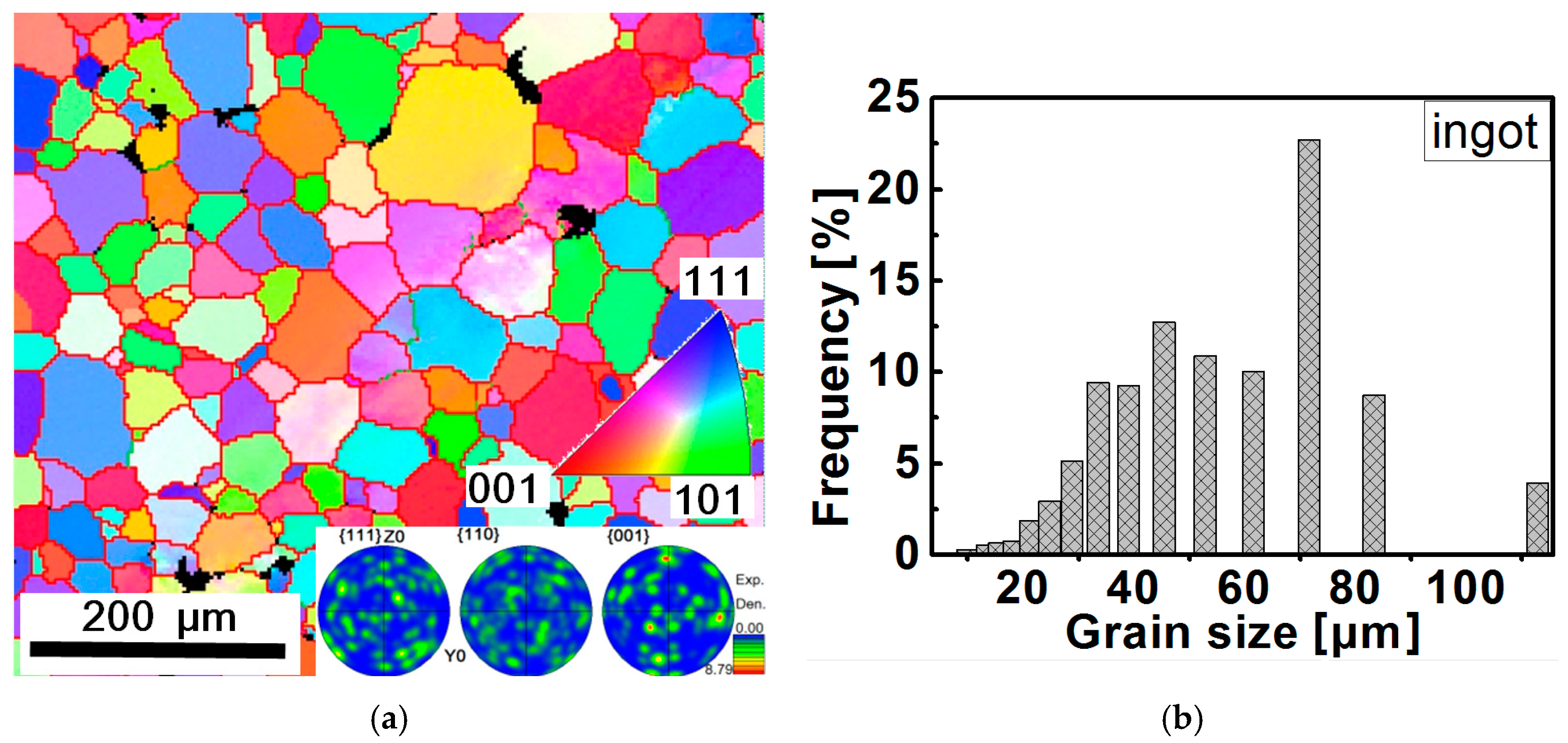
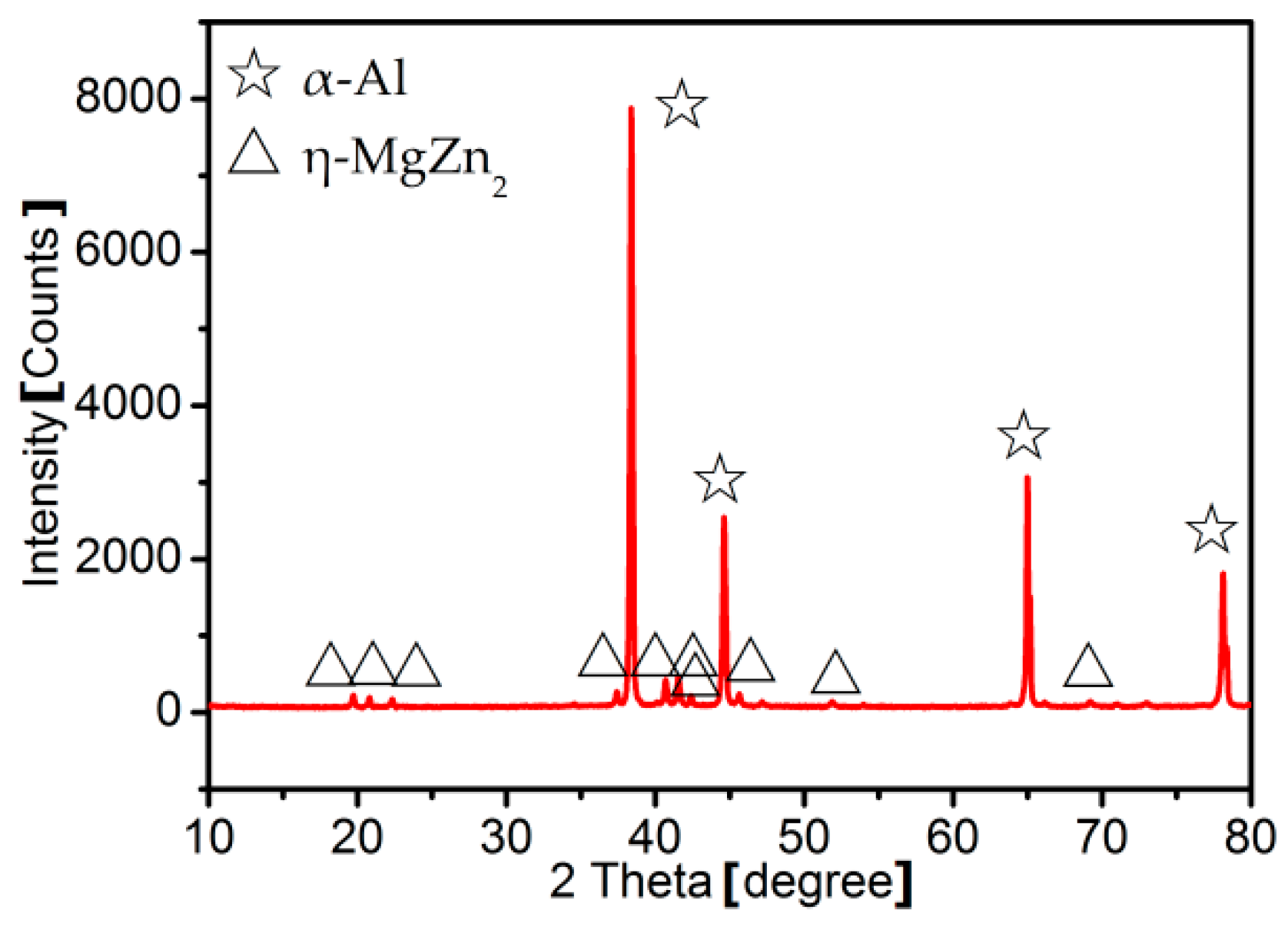

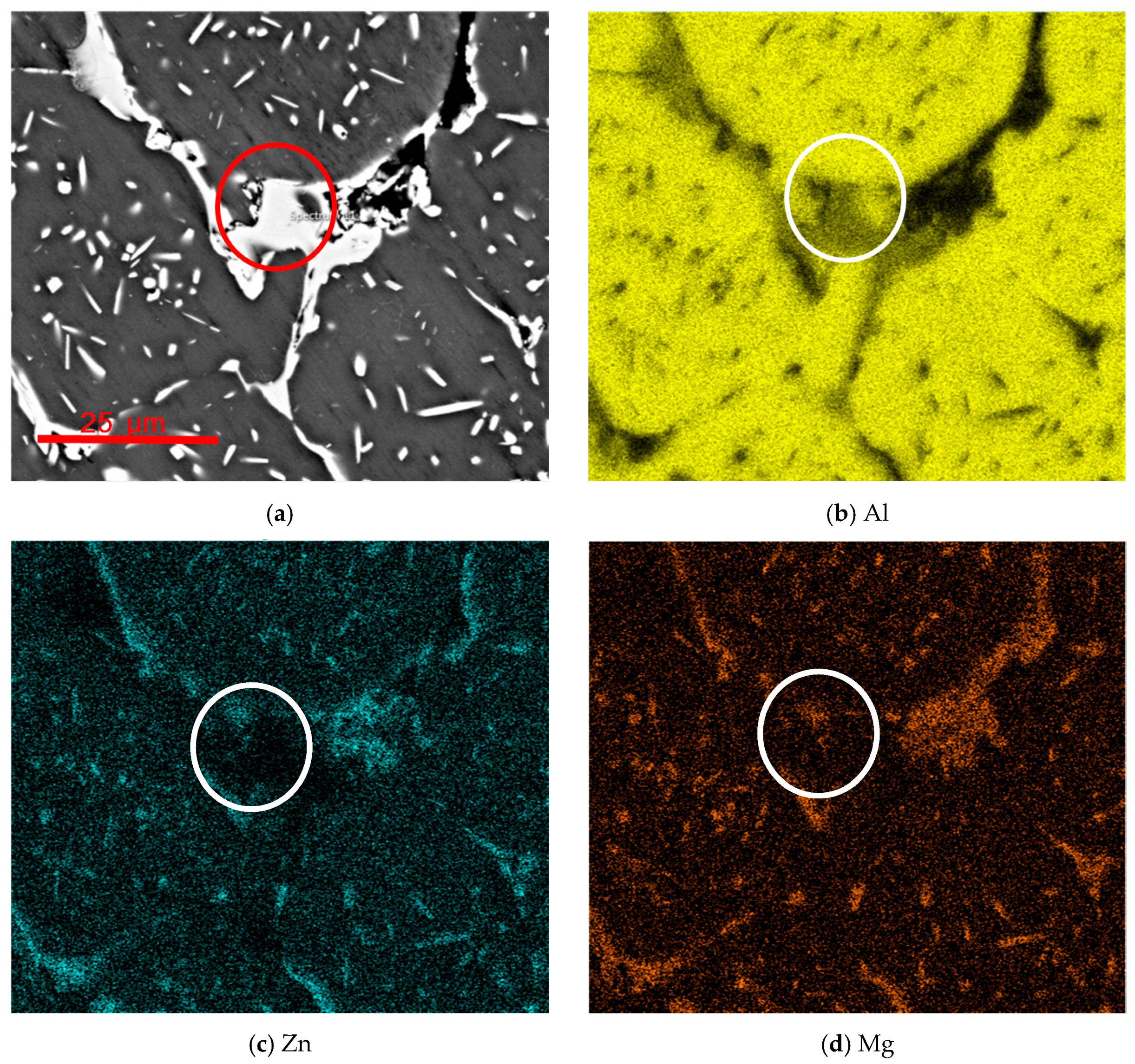
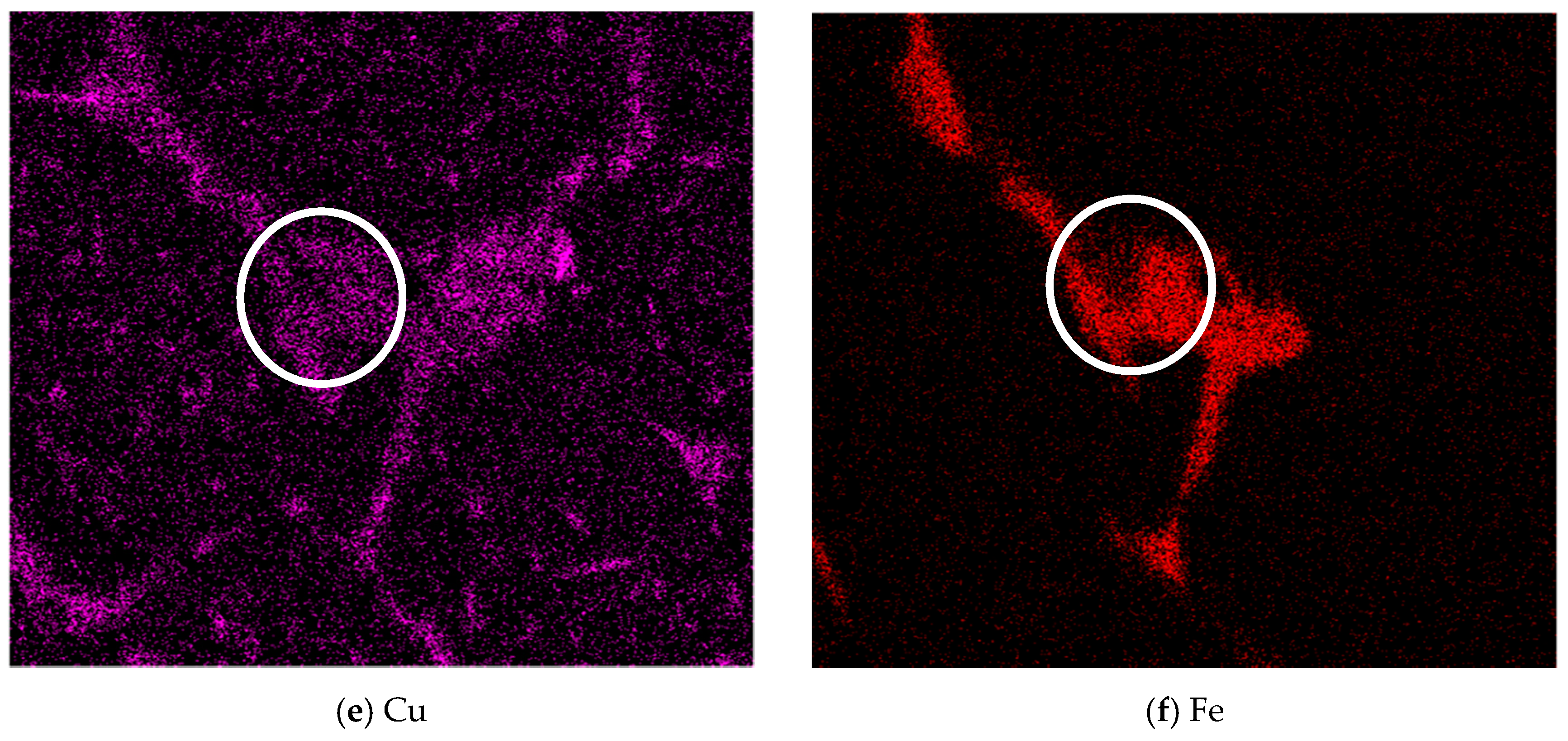
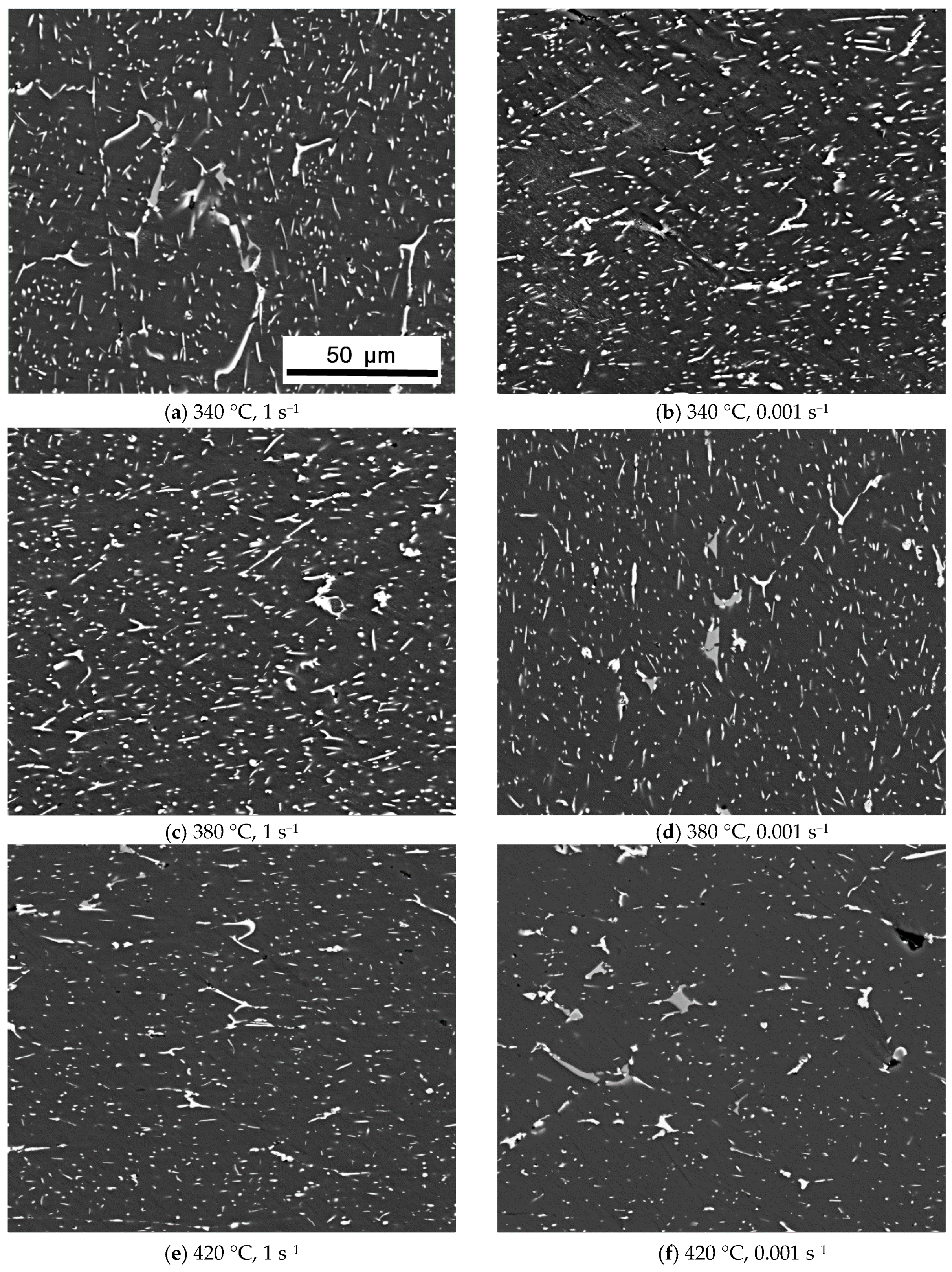
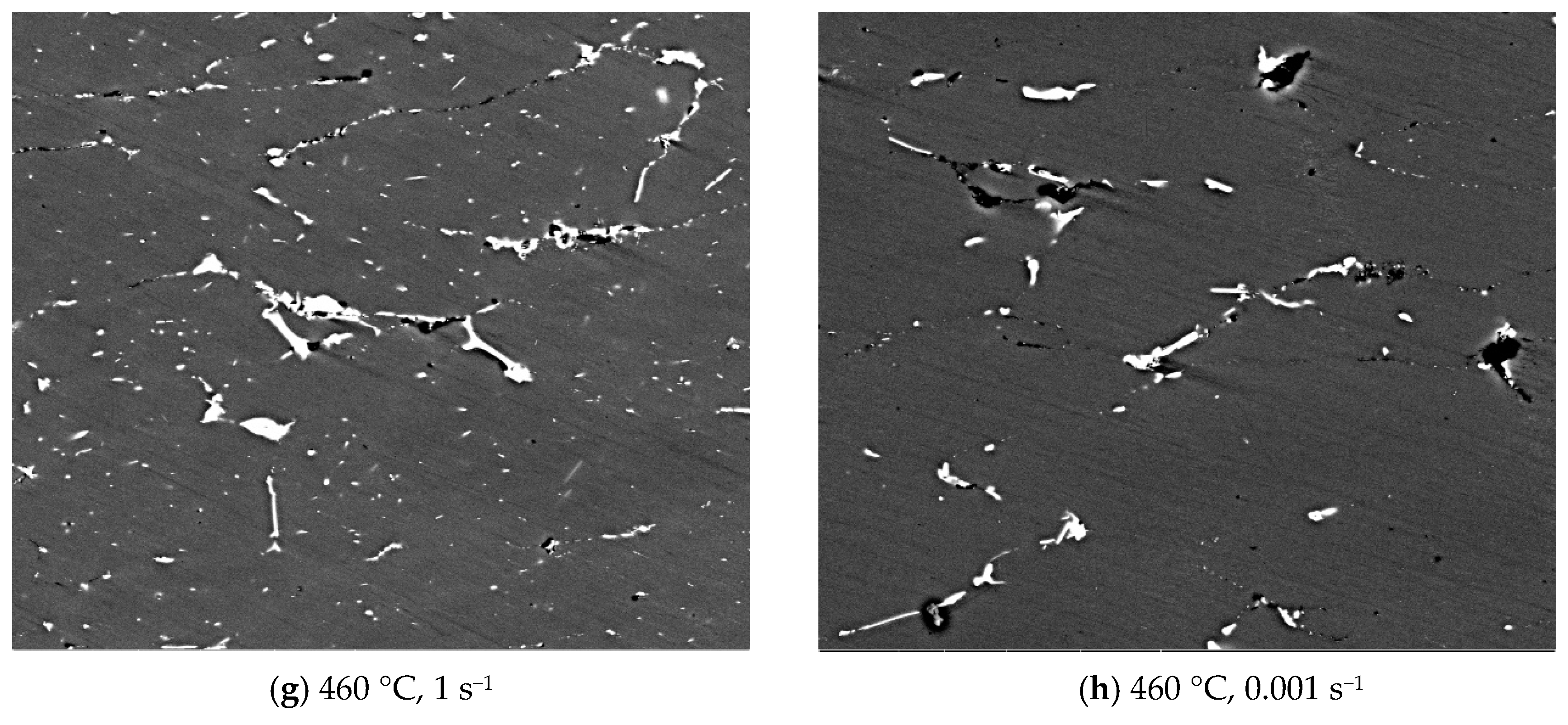
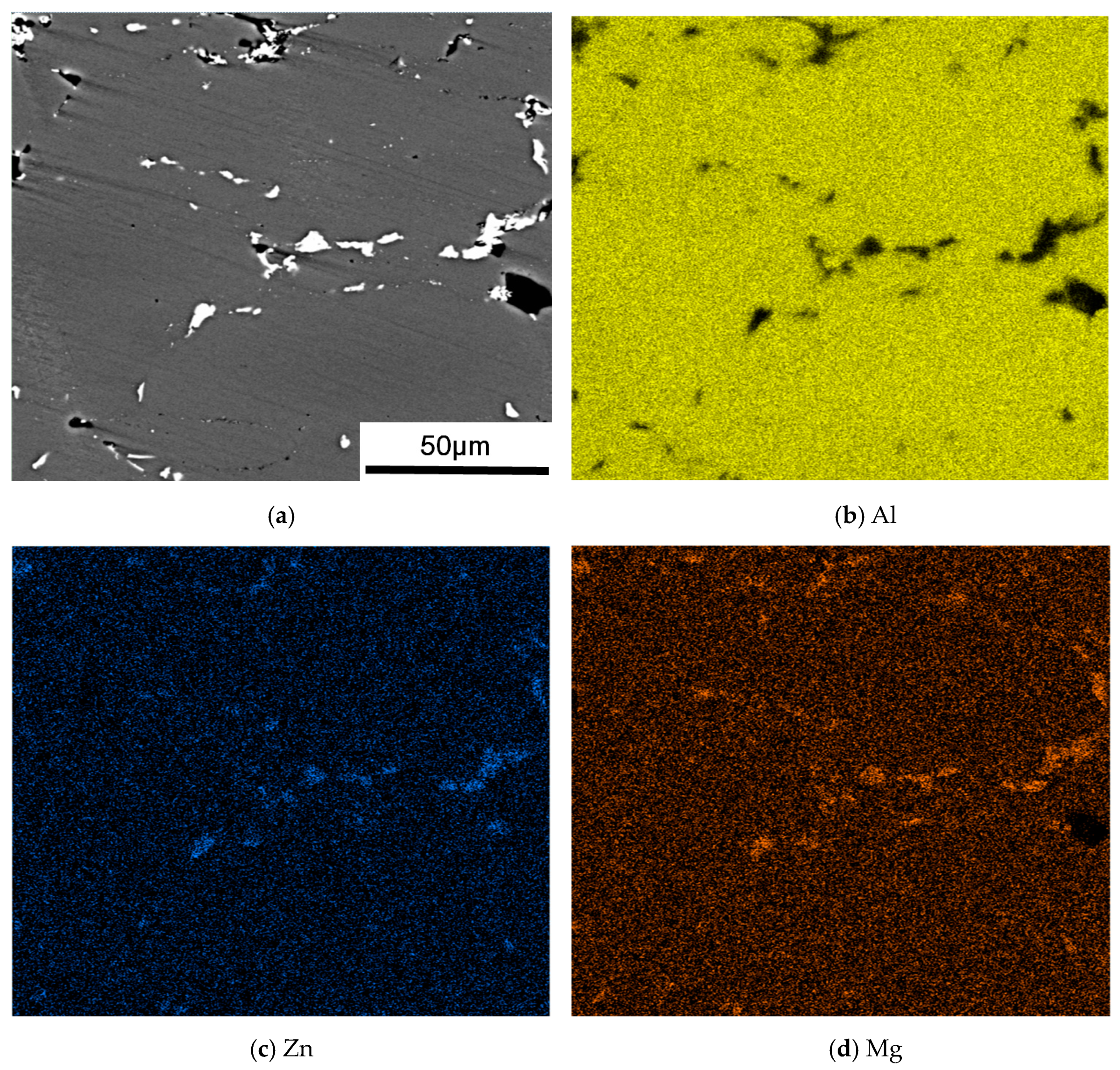

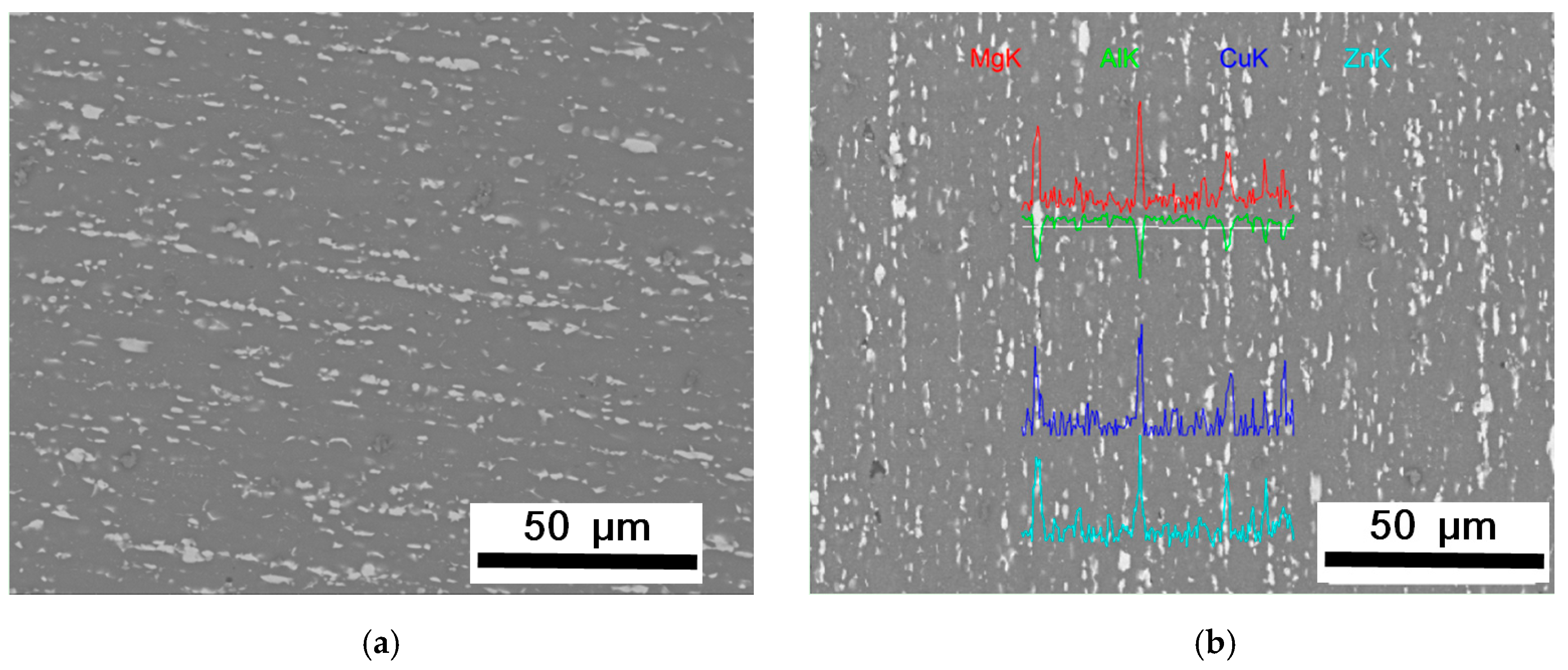
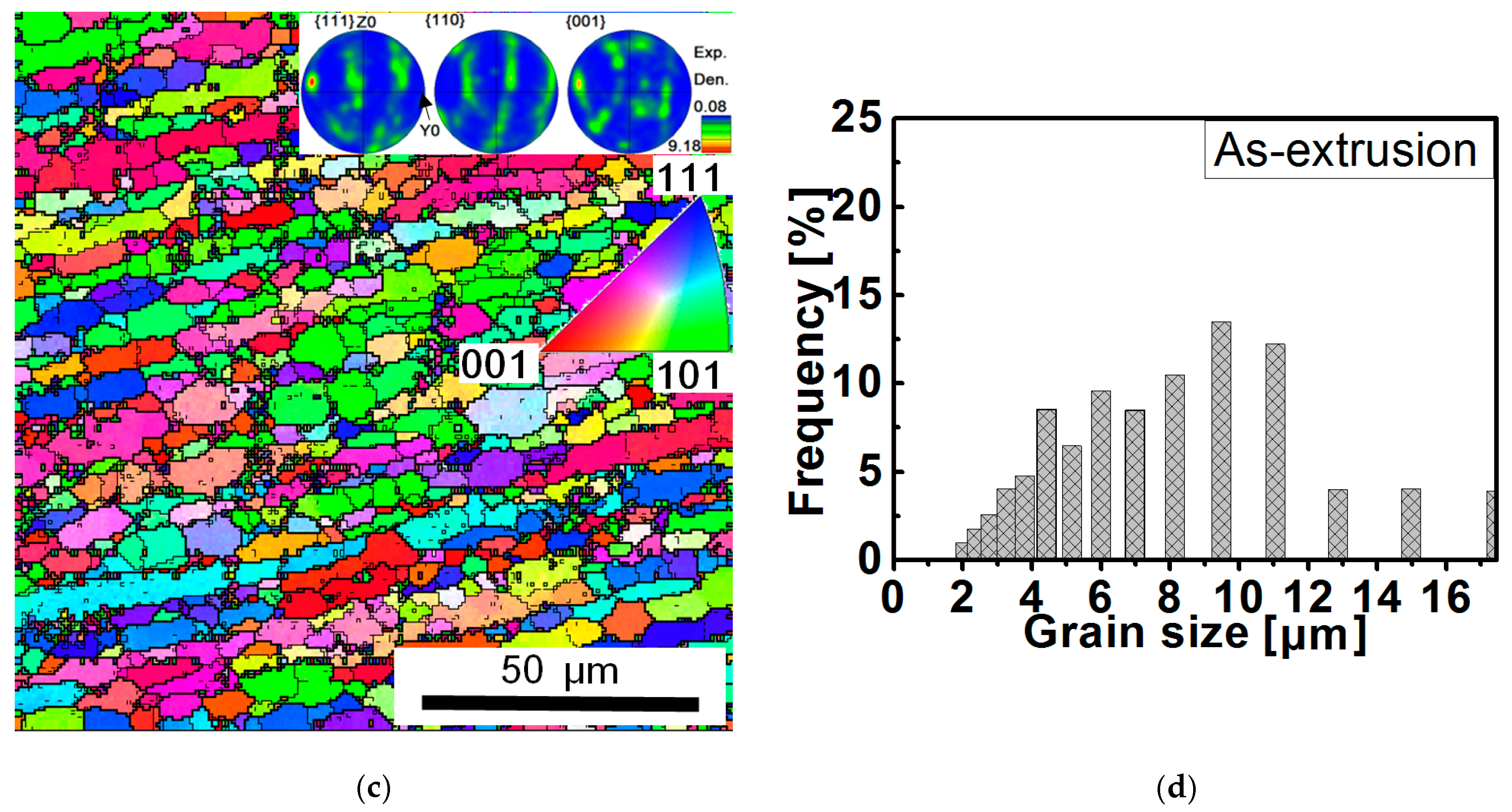





| Items | Parameters |
|---|---|
| Pour Temperature | 780–950 °C |
| Atomization Gas Rate | 20–35 m3/min |
| Metal Flow Rate | 8–55 kg/min |
| Gas to Metal Ratio | 0.5–2 |
| Atomization Gas Pressure | 0.5–1 MPa |
| Spray Angle | 25–35° |
| Deposition Distance | 150–290 mm |
| Substrate Rotation Rate | 100–200 r/min |
| Elements | Al | Zn | Mg | Cu | Zr | Fe | Si |
|---|---|---|---|---|---|---|---|
| wt. % | Bal. | 8.3 | 2. 1 | 2.5 | 0.1 | < 0.1 | < 0.1 |
© 2020 by the authors. Licensee MDPI, Basel, Switzerland. This article is an open access article distributed under the terms and conditions of the Creative Commons Attribution (CC BY) license (http://creativecommons.org/licenses/by/4.0/).
Share and Cite
Sheng, X.; Yang, Y.; Yu, H.; Wu, W.; Li, K.; Liu, Y.; Zhao, Y.; He, G. Hot Extrusion Enhanced Homogenization of Microstructure in a Spray Deposition Aluminum Alloy. Metals 2020, 10, 263. https://doi.org/10.3390/met10020263
Sheng X, Yang Y, Yu H, Wu W, Li K, Liu Y, Zhao Y, He G. Hot Extrusion Enhanced Homogenization of Microstructure in a Spray Deposition Aluminum Alloy. Metals. 2020; 10(2):263. https://doi.org/10.3390/met10020263
Chicago/Turabian StyleSheng, Xiaofei, Yong Yang, Hongchun Yu, Wenke Wu, Kai Li, Yu Liu, Yifan Zhao, and Guoai He. 2020. "Hot Extrusion Enhanced Homogenization of Microstructure in a Spray Deposition Aluminum Alloy" Metals 10, no. 2: 263. https://doi.org/10.3390/met10020263





